Table of Contents
A semicolon is a punctuation mark (;) used to connect closely related ideas or separate items in complex lists. It’s more powerful than a comma but not as final as a period. Learning how to use a semicolon can help you write clearer, more sophisticated sentences.
In this blog post, we’ll discuss what a semicolon is, how to use it, and some common mistakes to avoid.
What is a Semicolon?
A semicolon is used to join two independent clauses that are closely related in thought. It can also help separate items in a list when those items already contain commas, avoiding confusion. The semicolon provides a pause that is stronger than a comma but not as definite as a period.
Example Sentences:
I have a big test tomorrow; I need to study.
She loves pasta; he prefers pizza.
It’s raining outside; take an umbrella.
How to Use a Semicolon
- Linking Independent Clauses
A semicolon is often used to join two independent clauses without using a conjunction (like and, but, or so). Both parts of the sentence must be able to stand alone as complete sentences.
- I have a meeting tomorrow; I need to prepare for it.
In this example, both I have a meeting tomorrow and I need to prepare for it are complete sentences. The semicolon links them because they are closely related ideas.
- Separating Items in a Complex List
A semicolon can also be used in lists where the items already contain commas. This helps avoid confusion.
- The meeting will include John, the manager; Sara, the lead designer; and Mark, the client.
In this sentence, using commas alone would make it hard to tell where one item ends and the next begins. The semicolon provides clarity
- Avoiding a Semicolon with a Conjunction
Do not use a semicolon when two independent clauses are connected by a conjunction. Instead, use a comma.
Incorrect: I enjoy painting; and I love sculpting.
Correct: I enjoy painting, and I love sculpting.
Incorrect: He didn’t sleep well; but he still went to work.
Correct: He didn’t sleep well, but he still went to work.
Semicolon vs. Comma
A semicolon, on the other hand, joins two complete thoughts or clarifies complex lists. A comma is used to show a close connection between the ideas
Comma:
I have a meeting tomorrow, and I need to prepare for it.
Here, a comma is used with the conjunction and to join two related ideas. Without the conjunction, a semicolon would be the correct choice.
Semicolon:
I have a meeting tomorrow; I need to prepare for it.
Here, the semicolon separates two independent clauses that could each stand as a sentence on their own. It highlights the close relationship between the two ideas without needing a conjunction.
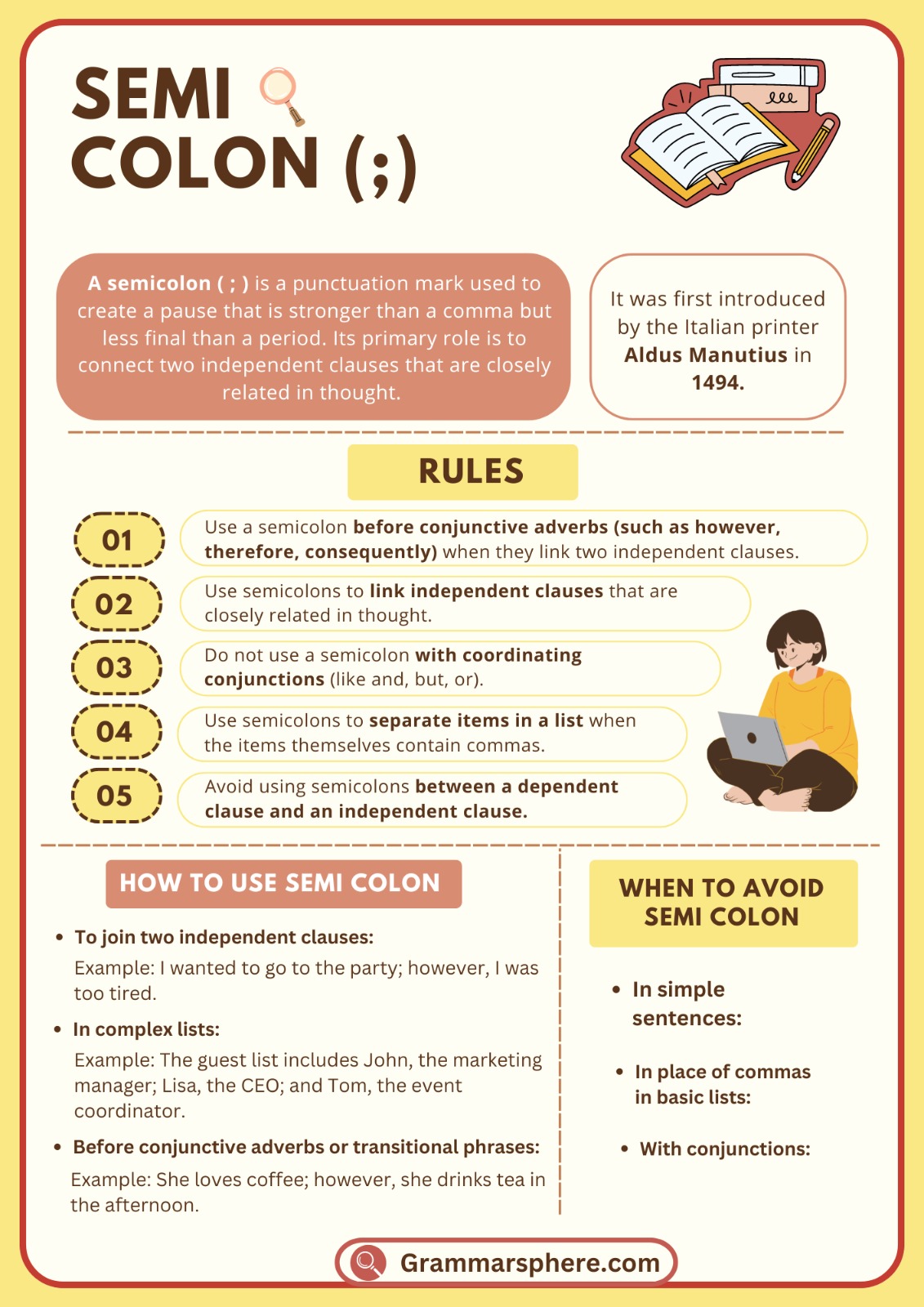
Semicolon Rules
The semicolon can be tricky, but once you know the rules, it becomes a useful tool for clearer writing. Below are the main rules for using a semicolon, with three examples for each.
1. Linking Two Independent Clauses Without a Conjunction
A semicolon is used to link two closely related independent clauses that could stand alone as separate sentences. No conjunction (like and, but, so) is needed.
- I finished my assignment; now I can relax.
- It was raining heavily; we decided to stay indoors.
2. Using a Semicolon with a Transitional Phrase or Conjunctive Adverb
You can use a semicolon before a transitional phrase (like however, therefore, in addition) to connect two related independent clauses.
- The team played well; however, they lost the match.
- She loves to read; in fact, she finishes a book every week.
3. Separate Items in a Complex List
You can Use a semicolon to separate items in a list when the items themselves contain commas. This prevents confusion and ensures clarity.
- The conference will be held in New York, New York; Los Angeles, California; and Miami, Florida.
- I need to buy pens, which are black; notebooks, which have blue covers; and pencils, which are sharpened.
4. Avoid Using a Semicolon with a Conjunction
Do not use a semicolon when two independent clauses are connected by a conjunction (like and, but, or). In this case, a comma should be used instead.
Incorrect: I enjoy painting; and I love sculpting.
Correct: I enjoy painting, and I love sculpting.
Incorrect: He didn’t sleep well; but he still went to work.
Correct: He didn’t sleep well, but he still went to work.
5. Using a Semicolon to Link Independent Clauses with Complex Subjects or Long Phrases
Sometimes, when clauses have internal commas or are long, a semicolon can help to clearly separate them.
- The trip was exciting, filled with adventure, and unforgettable; it was, without a doubt, one of the best vacations we’ve had.
- Her speech was inspiring, passionate, and emotional; however, the audience seemed unmoved.
6. Using a Semicolon in Compound Sentences with Multiple Commas
When a compound sentence contains multiple commas in one or both clauses, a semicolon can help avoid confusion by clearly separating the two clauses.
- The singer, who was extremely talented, performed beautifully; however, the audience, which was tired, didn’t respond as expected.
- The lecture was engaging, informative, and interactive; but, by the end, the audience was exhausted, hungry, and eager to leave.
Example Sentences with Semicolon
- I wanted to go for a run; however, it started raining heavily.
- She loves to paint; her favorite medium is watercolor.
- The movie was thrilling; the special effects were truly impressive.
- I have a big exam tomorrow; I can’t go out tonight.
- The team worked hard all season; they finally won the championship.
- He enjoys hiking in the mountains; she prefers relaxing at the beach.
- The dessert was delicious; everyone asked for the recipe.
- I finished reading the book; it was even better than I expected.
- We visited Paris last summer; the Eiffel Tower was breathtaking.
- She has a talent for music; her piano skills are remarkable.
Common Mistakes
Many English learners struggle with using semicolons correctly. Here are the most common mistakes, along with clear examples to help you understand the difference between right and wrong usage.
- Using a Semicolon Instead of a Comma in a Simple List
A semicolon should only be used in a list when the items themselves contain commas. In simple lists, a comma is sufficient.
✔️ Correct:
I bought apples, bananas, and grapes.
❌ Incorrect:
I bought apples; bananas; and grapes.
- Using a Semicolon with a Conjunction (Like ‘and’, ‘but’, or ‘so’)
Semicolons are not needed if you’re connecting two independent clauses with a conjunction. A comma should be used in this case.
✔️ Correct:
I wanted to go for a walk, but it started raining.
❌ Incorrect:
I wanted to go for a walk; but it started raining.
- Using a Semicolon to Connect an Independent Clause to a Dependent Clause
A semicolon should only be used between two independent clauses, not between an independent and a dependent clause. For a dependent clause, use a comma.
✔️ Correct:
Because I was tired, I went to bed early.
❌ Incorrect:
Because I was tired; I went to bed early.
- Overusing Semicolons in a Single Sentence
Learners sometimes overuse semicolons within one sentence, which can make the sentence feel choppy. Use them sparingly and only when necessary.
✔️ Correct:
He went to the store, bought some bread, and returned home.
❌ Incorrect:
He went to the store; bought some bread; and returned home.
- Using a Semicolon Between Clauses That Are Not Related
Semicolons should link closely related independent clauses. If the clauses are not connected in meaning, use a period instead.
✔️ Correct:
The sun was setting; it was a beautiful sight.
❌ Incorrect:
I enjoy reading; my favorite color is blue.
Period vs. Semicolon
Many English learners are confused about when to use a period (.) versus a semicolon (;). Both punctuation marks separate ideas in sentences, but they serve different purposes. Here’s how to distinguish between the two:
Using a Period
A period is used to end a complete thought or sentence. It signifies the end of an idea, and the next sentence begins a new, unrelated or slightly connected thought.
✔️ Correct:
I finished my homework. Now, I can relax.
In this example, each sentence stands alone with no close relation between the two ideas, so a period is appropriate.
Using a Semicolon
A semicolon is used to link two independent clauses that are closely related in thought. It creates a stronger connection between the ideas compared to a period.
✔️ Correct:
I finished my homework; now I can relax.
Here, the second idea (relaxing) is closely connected to the first (finishing homework), so a semicolon is more suitable than a period
You May Also Like

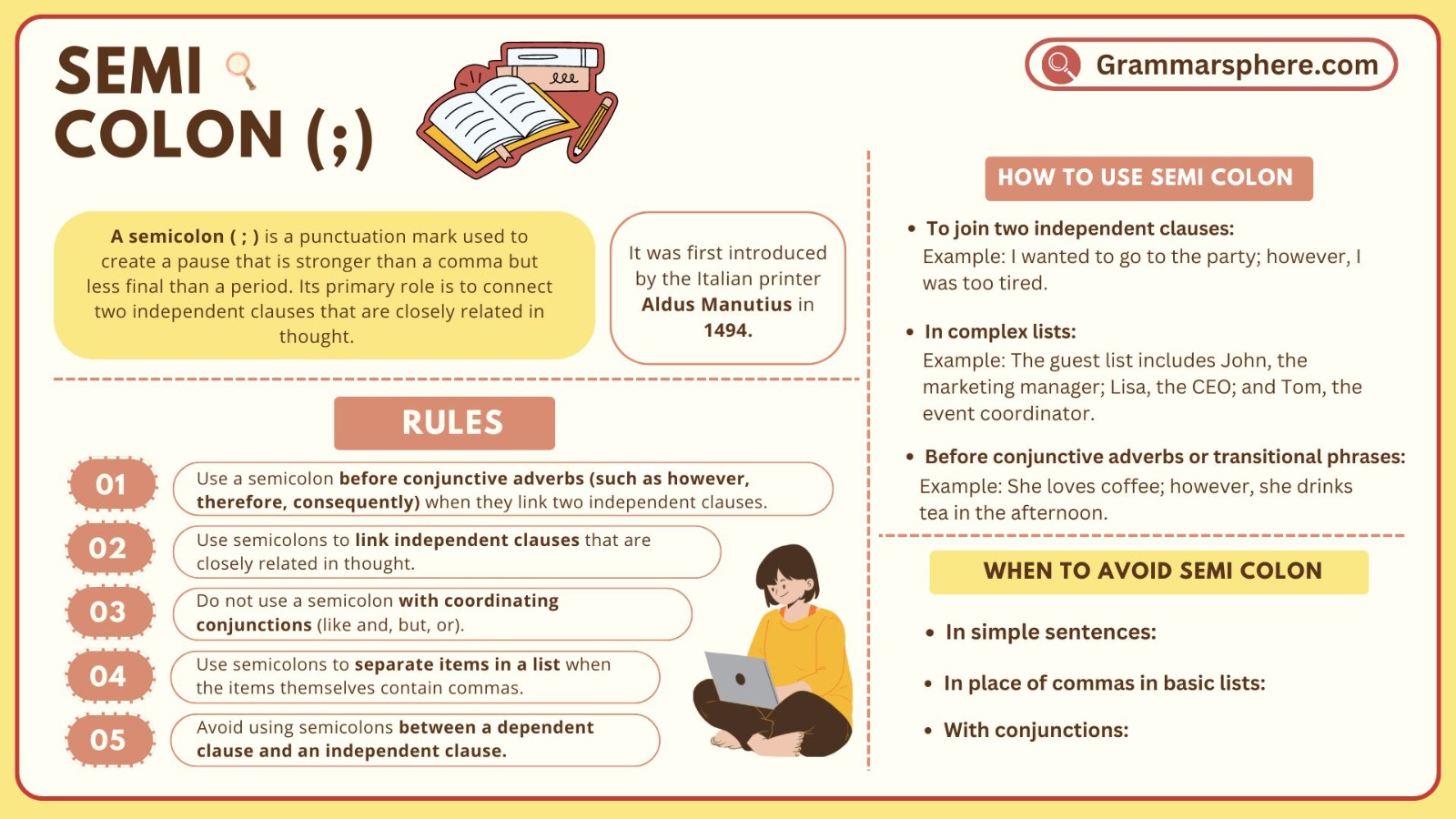
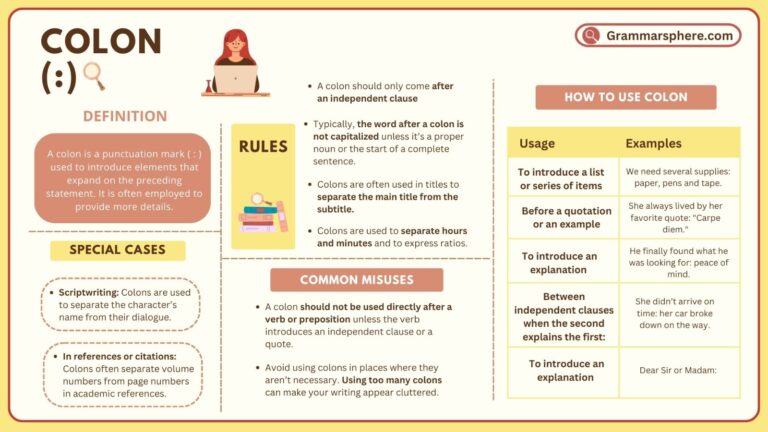
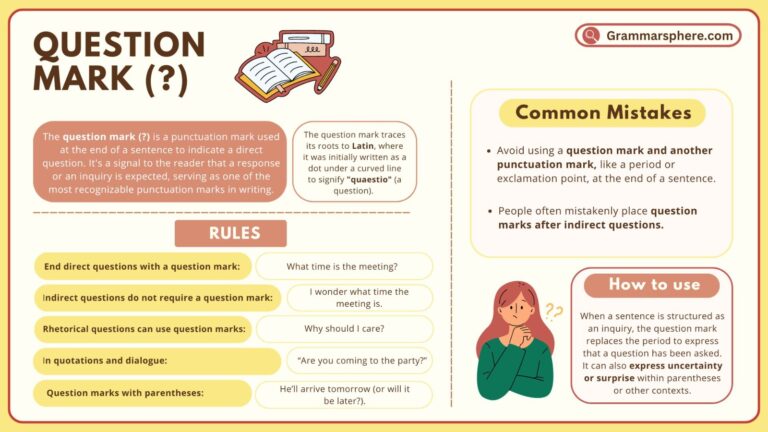
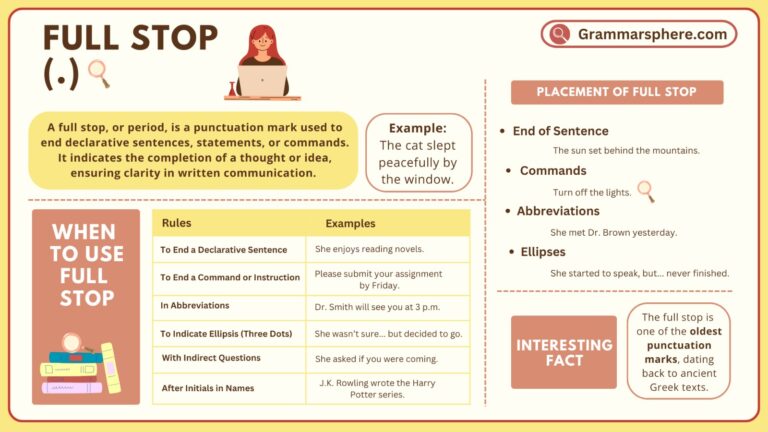
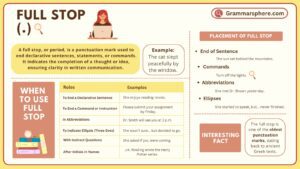
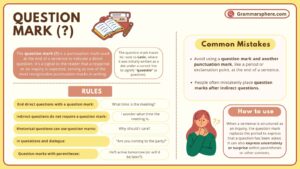
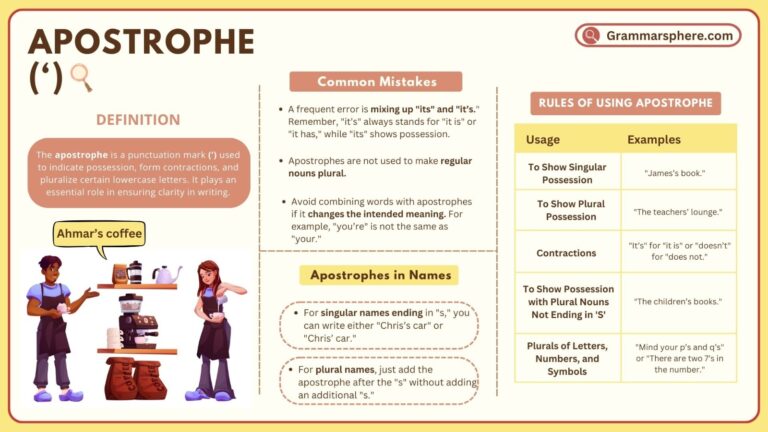

Leave a Comment